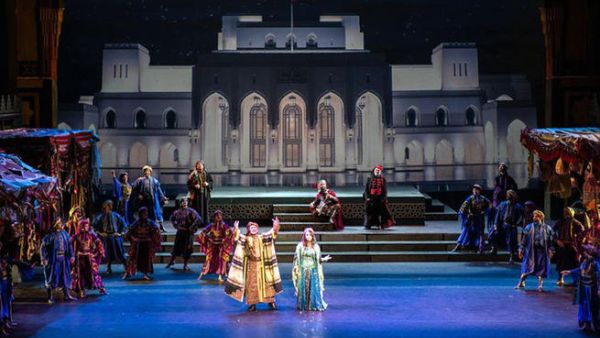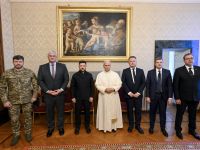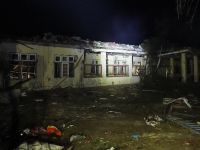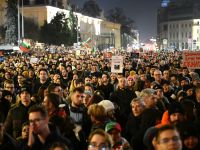The Vision
One of the most remarkable things about the Royal Opera House Muscat is the vision that inspired it. It is the first opera house in the Gulf, where there is no established culture of opera or western classical music. Indeed, the nearest dedicated opera house is in Cairo, more than 2,750km away. Omani leader, Sultan Qaboos bin Said, is known to be passionate about classical music and wanted to develop this art form in the Sultanate. To help fulfill his dream, high flying professionals with international experience, were appointed to develop the project and bring it to fruition. The current director general, Christina Scheppelman, who is key to its success has worked in opera houses around the world, from La Fenice in Italy to the United States, her last position before joining ROHM having been artistic director at the Washington National Opera, in Washington DC.
The building
Architecturally, the building is designed in the classic Islamic style, embracing some of the traditional forms and details of grand buildings from around the region. Architects Wimberly Allison Tong and Goo (WATG) designed it with traditional Arabic design elements such as porches, terraces and sculptural tower forms. Built with local construction materials (Omani desert rose stone) and stucco wall coverings, the building is set within an 80,000sq metre plot of land and surrounded by landscaped gardens.
Inside the building, attention to detail is displayed in every element - from the intricate handcrafted décor to the bespoke crystal chandeliers and the delicate gold leaf inlaid in the hand-carved wooden decorations.
The technical prowess - a dual-purpose auditorium
In a unique feat of engineering, the state-of-the-art auditorium is capable of seamlessly being transformed from a proscenium theatre for opera to a symphonic concert hall - at the touch of a button.
The auditorium is a multi-form facility designed to accommodate a wide range of performance types in a technically and acoustically perfect setting. In ‘opera mode', the auditorium seats 1,100 audience members. A traditional horseshoe shape, the room features a proscenium arch, fly-tower, and orchestra pit. The stage is generously proportioned, with side stages for scenery and sets associated with large-scale opera.
Using advanced automated stage engineering systems, the room easily transforms into ‘concert mode'. In this format, the room becomes a classical shoebox concert hall with parallel side walls and a high, flat ceiling. This configuration creates a visually and acoustically ideal environment for all types of music.
The room is as beautiful as it is technical, with patrons of the opera house unaware of the level and sophistication of the technology inside because it is all carefully hidden from view. Even the stage tracks - which carry the concert shell forward - are completely covered by special panels when not in use. One technological gadget that visitors enjoy is the subtitle seatback screens provided throughout the auditorium. These touchscreens allow patrons to select from a variety of languages to read subtitle translations for the operatic production on stage. It is thought this is the first time that such a service has been implemented in Arabic, giving audiences an additional method of appreciating the spectacle of opera.
The design of the auditorium plays a key part in helping the venue achieve its artistic goals. The eclectic programming of the centre highlights how the facility aims to showcase the world's best classical performers alongside traditional regional performance types.
The new up-coming programme Season 2013-2014
As Christina Scheppelman observes: "We are 18 months young and have much to achieve yet but we have put together another exciting programme for the coming season starting this September."
The diversity of the different nationalities and cultures performing during this season reflects the broad programming of ROHM through a myriad of international events and variety of genres from all around the world including opera, symphonic music, ballet, jazz, Arabic tarab and Omani military music.
The new season will commence mid-September 2013 with three performances of Rossini's The Barber of Seville from Teatro San Carlo Napoli, Italy and will continue until May, 2014. Operatic productions will include Verdi's La Traviata, Dvořák's Rusalka and Mozart's The Marriage of Figaro performed by the legendary Vienna State Opera and Orchestra.
Arab music will be strongly represented once more by various artists reflecting the diversity from all over the region with performances from Oman's Royal Guard, The Royal Oman Symphony Orchestra, Magida El Roumi, Kadim Al Sahir, Abdullah Al Ruwaishid and Lotfi Bouchnak.
ROHM will also continue to bring the very best of world music to Oman, presenting several international artists including Palestine's Le Trio Joubran, the Senegalese sensation Youssou N'Dour, Portugal's Mariza, Murat Coskun of Turkey, the Chinese Chi of Shaolin and folk music from both Russia and Tajikistan.
In line with ROHM's firm commitment to education, there will be a host of educational and outreach events including ‘Music For and From Children' concerts, special matinee performances for students and families, Sufi and Organ Symposiums, workshops with visiting artists, Open House events, daily public tours and pre-performance talks.
Issam El Mallah, adviser to the Board for Programming and Events, highlighted the importance of diversity among the performances offered by ROHM, saying: "The diversity of our performances represents an essential part of the ROHM philosophy and this is an important focus for us when we plan each season. This can be seen not only through the diversity of musical genres we present across different cultures, including opera, ballet and classical music for example, but also from within the same culture such as sufi chants and tarab found in Arab culture". El Mallah added that this diversity is also reflected "by the variety of performances presented by Omani participants, including members of the Royal Oman Symphony Orchestra, Omani folkloric groups and Omani military bands."
During the launch of the new season, Dr. Rawiah bint Saud Al Busaidiyah, Minister of Higher Education and chair of the board, commented on ROHM's achievements: "Despite the short time since the inauguration of ROHM and its launch into the world's orbit of the most distinguished art organisations, ROHM has managed to become one of the most prominent institutions for music and the arts in the Sultanate of Oman and indeed the world. We are proud of its accomplishments and look forward to an exciting new season next year. Although Oman has a rich history of traditional music and dance, there is no other performing arts centre of this scale in the region."
Concluding the presentation of the new programme, Scheppelman observed:"This 2013/2014 season promises exceptional performances with a wide variety of events. It is my great pleasure to invite our loyal audience to join us once again this season, and we also look forward to introducing many new audiences to the great beauty of ROHM and its wonderful events".
The ROHM has undoubtedly put Oman high on the international circuit, attracting world-class performers and orchestras, with its varied artistic programming placing Muscat firmly on the world's cultural map.
Will you be attending some of the 2013/2014 season events? Please share by commenting below!








